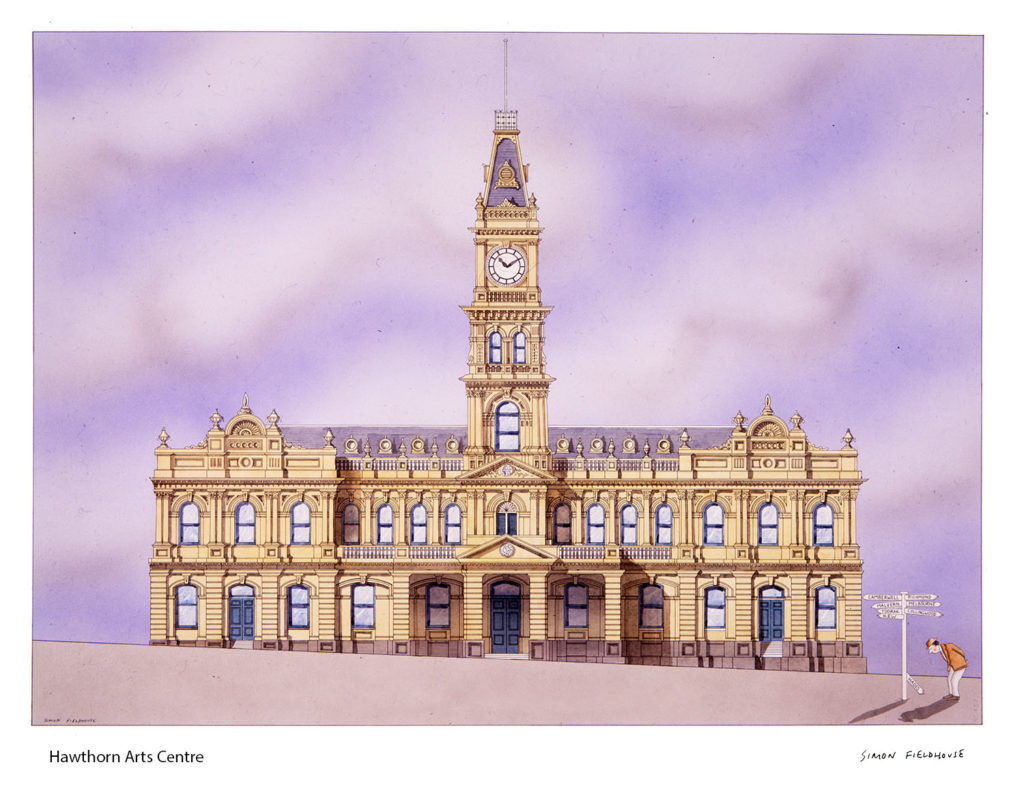
The Hawthorn Arts Centre (formerly the Hawthorn Town Hall)
Former Hawthorn Town Hall: A Transformative Journey to the Hawthorn Arts Centre
The former Hawthorn Town Hall, now the Hawthorn Arts Centre, stands as a testament to the power of adaptive reuse and the preservation of historical landmarks. Situated in the heart of Hawthorn, a leafy suburb of Melbourne, Australia, this heritage building has evolved from its civic and administrative roots to become a vibrant hub for arts, culture, and community engagement.
Built in 1888, the Hawthorn Town Hall was originally designed by renowned architect George Johnson and served as the administrative and civic center for the local community. Over the years, it bore witness to a multitude of public events, including council meetings, social gatherings, and political discourse. However, as the town's needs evolved and the functions of the building changed, the future of the historic structure became uncertain.
The decision to repurpose the building rather than demolish it was a pivotal moment in Hawthorn's history. In 2013, after an extensive restoration and refurbishment, the former Town Hall was reborn as the Hawthorn Arts Centre, a thriving cultural institution with a contemporary twist. This transformation was made possible through a collaborative effort involving the local government, architects, preservationists, and the community, all committed to preserving the town's heritage.
The Hawthorn Arts Centre now encompasses a range of creative spaces, including galleries, performance venues, studios, and community meeting rooms. It caters to a diverse audience, from art connoisseurs and musicians to aspiring artists and children. The center offers a dynamic program of events and exhibitions, celebrating both local and international talent. It fosters artistic expression and cultural exchange, enriching the community's cultural life.
One of the notable features of the Hawthorn Arts Centre is its commitment to educational and community engagement. It offers workshops, lectures, and cultural programs that encourage residents to explore their creative potential. By doing so, the Arts Centre has become more than just a cultural institution; it is a symbol of the community's commitment to the arts and the preservation of its rich history.
The transformation of the former Hawthorn Town Hall into the Hawthorn Arts Centre stands as a model for adaptive reuse, providing a practical solution to the challenges of preserving historic landmarks while meeting the needs of a modern community. By repurposing this iconic building, the city of Hawthorn has not only preserved its architectural heritage but has also created a dynamic and inclusive cultural hub that enhances the quality of life for its residents.
In conclusion, the former Hawthorn Town Hall, now the Hawthorn Arts Centre, is a remarkable example of how history and modernity can coexist. The preservation and adaptive reuse of this historic landmark not only honors the past but also enriches the cultural landscape of the present. It serves as a source of inspiration for other communities seeking to breathe new life into their historical treasures while creating vibrant spaces for art and culture.
The exterior of the building is a testament to Victorian era craftsmanship. The facade is adorned with elegant classical elements, including Corinthian columns, decorative balustrades, and intricate stonework. The building's grandeur is further accentuated by a central clock tower, which serves as an iconic focal point. The tower, with its ornate detailing, adds to the historic charm of the structure. The carefully restored exterior stands as a symbol of the town's heritage and commitment to preserving its architectural legacy.
The interior of the Hawthorn Arts Centre is equally captivating. The grand entryway features a soaring atrium with a stunning glass roof that allows natural light to flood into the building. The atrium provides an inviting and spacious atmosphere for visitors, offering a modern contrast to the classical exterior. The restoration and refurbishment efforts were meticulous, ensuring that the building retained its original character and charm while accommodating contemporary needs.
The main auditorium, known as the Town Hall Gallery, has been thoughtfully updated to accommodate a range of artistic and cultural events. It boasts a beautifully ornate ceiling, intricate plasterwork, and rich wooden detailing, all of which have been preserved and carefully restored. This space now serves as a versatile venue for exhibitions, performances, and community gatherings, demonstrating the successful integration of modern functionality within a historical framework.
The incorporation of contemporary design elements within the existing structure ensures that the Arts Centre remains relevant and accessible to the community. Modern art galleries, studios, and educational facilities have been seamlessly integrated to meet the evolving needs of both artists and the public. The building's architectural balance between history and innovation highlights its commitment to serving as a vibrant cultural hub.
In conclusion, the architecture of the former Hawthorn Town Hall, now the Hawthorn Arts Centre, is a splendid representation of how architectural heritage can be preserved and repurposed for the modern era. The careful restoration of its Victorian Free Classical elements, combined with well-planned contemporary additions, has resulted in a building that stands as a testament to the town's history while embracing the future. The architectural harmony of the Hawthorn Arts Centre not only captivates visitors but also provides a functional and inspiring space for the arts and culture.